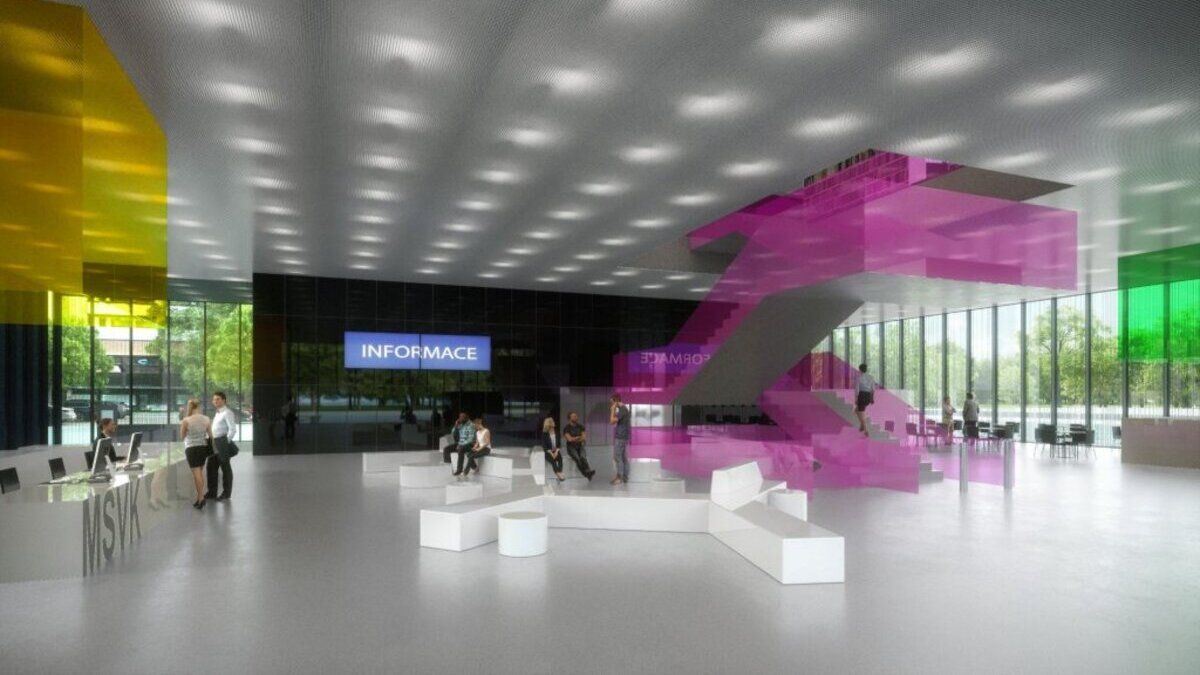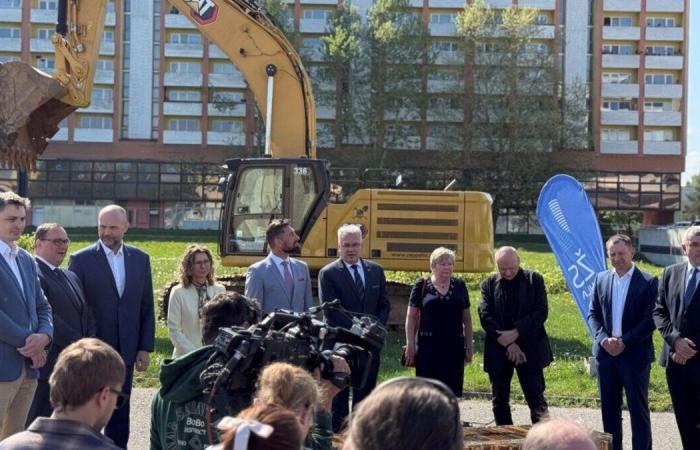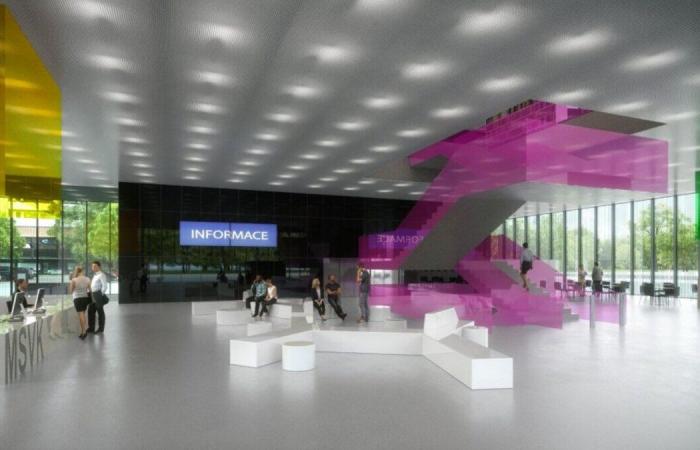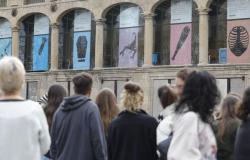The international construction company Yellowthrough its Czech subsidiary Ohla žshas officially initiated the construction of the building Black cube (Black cube) in the city of Ostravaeast of the Czech Republic. With a budget of 2.6 billion Czech crownssome 104 million euros. The completion of the works is planned to mid -2027.
The building will rise in front of the House of Culturein the central street October 28and it will be the future headquarters of the Moravo-Silesia Research Library.
The consortium in charge of the execution of the works is Black Rubiccomposed of Ohla žs. According to its general director, Roman Kocúrekit is a technically unique work: «It is a monolithic reinforced concrete structure composed of nine stacked volumes that function as superimposed bridges. The challenge lies in the complex static and the different levels of load that the design poses ».
The design has been developed by the study Cuba & Pilař and contemplates a structure of nine plants About grounding, in addition to spaces dedicated to science, digitalization, technological innovation and collaborative work.

Kocúrek He added that the building will have a distinctive visual characteristic: «The architectural concept is complemented by a sheet of water that will surround the entire perimeter. This will generate the illusion that the building floats freely on the land, integrating into the urban space and providing visual lightness ».
The project is co -financed by the European Union, with funds channeled through the Fair transformation program.
Ohla puts the first stone
The first stone placement ceremony was held April 29 and was attended by representatives of the Regional Government, from the City Council of Ostrava, of the Czech Ministry of Environmentof the State Environment Fund and with citizen participation. The mayor of Ostrava, Jan Dohnalstressed that the building “will radically change the face of this area of the city.”

The region has received a European subsidy from 1,650 million crowns (some 66 million euros) For the project. The city of Ostrava has contributed 300 million crowns (12 million euros), while the rest of the budget will be covered with regional public financing.








